
KP 1/72 Aero MB.200
| KIT #: | 21 |
| PRICE: | LM 2.00 |
| DECALS: | Four options |
| REVIEWER: | Carmel J. Attard |
| NOTES: | Injection molded, lots of internal detail. |

| HISTORY |
The MB200 was chosen as a suitable heavy bomber for the Czech Air Force in mid 30s. The Czech government addressed on France with an enquiry for purchase of Licence and right to build a bomber, a fast series production. The selection was made on Marcel Bloch MB-200 En-4 which was of an all metal construction. The aircraft flew for the first time in 1933 and in early 1934 it was manufactured by Potez, Loire and Breguet.
In 1935 the Ministry of National Defence
joined a contract between Henry Potez and Aero factory in Prague. Agreement on
licence documentation was reached for producing the MB200, and one original
MB200 would be delivered for study purposes and intensive testing by the
Military Air Institute in Prague-Letonany. A series 74 MB200 ordered by the
Military Administration were to be built by the Aero and the Avia factories. The
bomber was an all metal with stressed skin construction. This started long
lasting 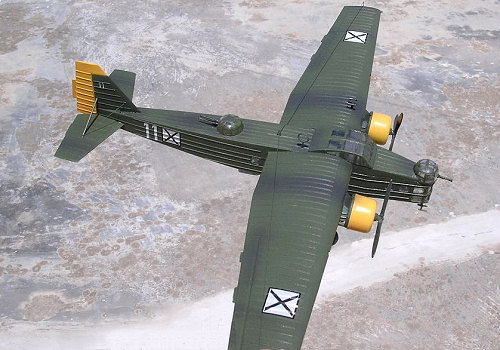 flight testing. An auto-pilot was installed. One MB200 series 52 was
converted into a photographic series for use by the Military Government
Institute. The Czech built ones had some modifications and were fitted with
local armament and equipment. The aircraft was driven by Letov V HD43 airscrews
and powered by two licence built 588 KW radial engines Walter K-14-1. It carried
a crew of 4-6 men and the armament consisted of 5x7.92 machine guns and 1,400 Kg
of bombs which were released pneumatically.
flight testing. An auto-pilot was installed. One MB200 series 52 was
converted into a photographic series for use by the Military Government
Institute. The Czech built ones had some modifications and were fitted with
local armament and equipment. The aircraft was driven by Letov V HD43 airscrews
and powered by two licence built 588 KW radial engines Walter K-14-1. It carried
a crew of 4-6 men and the armament consisted of 5x7.92 machine guns and 1,400 Kg
of bombs which were released pneumatically.
With the occupation of Bohemia and Moravia in 1939, the Germans took control of production and delivered several to Bulgaria. The MB200 was a modern aircraft at the time of its origin and production but soon it became obsolete particularly at the second half of the 30s. The great drawback with the aircraft was the problems developed by a flight on one engine.
Circa 1940 the Bulgarian Bomber element was considerably strengthened by an order of 32 Avia B-71 (SB2) bombers. These served along a single Aero 304 and no less than 12 Aero-built Bloch MB-200. The MB200s known in Bulgaria as Buchal, meaning ‘eagle owl’ were fitted with external bomb racks under the fuselage. Absolete as it may have been at the time for the French, it still formed a sizeable part of the Royal Bulgarian Air Force peacetime order of battle.
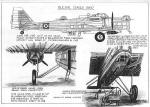 In spring 1940, the 5th Air
Regimen (Orliak) that catered for medium-bomber and school that was based at
Plovdiv consisted of a total of 56 aircraft. These comprised of B-71s, Do-11s,
Ju-52s, FW58s and MB-200s. The MB-200 was also listed among the aircraft forming
the training school at Sophia/ Vrajdebna. It was therefore associated with the
bomber training school during the service life. Little is known if it ever
conducted any bombing missions. Still the MB200 was regarded as a heavy bomber
of modern construction earlier in the mid- thirties. It soon however became
obsolete as the years gone by, and before the Bulgarian Air Force started to
enter it into service. Sources indicate that the Germans delivered the Czech
built MB 200 to the air force of Bulgaria.
In spring 1940, the 5th Air
Regimen (Orliak) that catered for medium-bomber and school that was based at
Plovdiv consisted of a total of 56 aircraft. These comprised of B-71s, Do-11s,
Ju-52s, FW58s and MB-200s. The MB-200 was also listed among the aircraft forming
the training school at Sophia/ Vrajdebna. It was therefore associated with the
bomber training school during the service life. Little is known if it ever
conducted any bombing missions. Still the MB200 was regarded as a heavy bomber
of modern construction earlier in the mid- thirties. It soon however became
obsolete as the years gone by, and before the Bulgarian Air Force started to
enter it into service. Sources indicate that the Germans delivered the Czech
built MB 200 to the air force of Bulgaria.
| THE KIT |
The 1/72 scale model of the MB 200 was the
21st kit released by the Czech company Kovozavody Prostejov (KP) and
when this occasion arose to build the kit it was quite a surprise. I have built
several kits by KP and the MB 200 was the largest in the range.
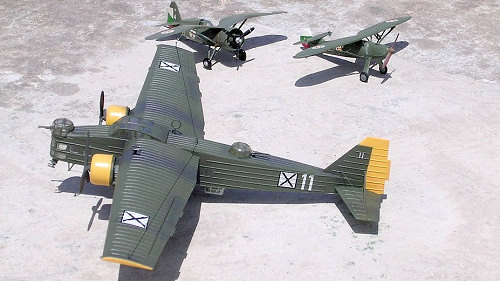 The kit proved
to be very accurate in scale and in detail particularly the fine detail made to
the interior of the aircraft and accurate cockpit layout and separate navigation
station. This comprised of seats, stools, instrument panel, bomb aimer
compartment, rear compartment etc. The kit is moulded in white plastic with
accurate robust panel detail made to every part of the fuselage (formed out of
four pieces) and also to the main plane panelling to represent the all metal
construction developed in the early thirties.
The kit proved
to be very accurate in scale and in detail particularly the fine detail made to
the interior of the aircraft and accurate cockpit layout and separate navigation
station. This comprised of seats, stools, instrument panel, bomb aimer
compartment, rear compartment etc. The kit is moulded in white plastic with
accurate robust panel detail made to every part of the fuselage (formed out of
four pieces) and also to the main plane panelling to represent the all metal
construction developed in the early thirties.
The kit itself is well presented with two large sprues in white plastic and a sprue in transparent parts totalling 76 components but no crew figures supplied. The parts came in a large (beautiful) box which depicts as box art duo formation of MB200 in dark green Czech camouflage scheme moving steadfast to a bombing mission. The picture is so fine that it can be used to determine detail such as the location of the various size of bombs carried by the bomber; air gunner position during mission etc. Upon opening the kit box, there came the surprise whereby the parts that form the fuselage come in four flat pieces which form the top, bottom, and two fuselage side parts.
The instruction sheet is very comprehensive and must be seen to be believed. The construction is displayed step-by-step. For example the engine nacelle is depicted in exploded view with each of nacelle comprising of 10 parts. A side section of the assembled nacelle is also given in order to show the final appearance of the Motor WalterK14-1-L assembly. There is also a side by side view section drawing which accurately shows interior layout of different crew compartments.
| CONSTRUCTION |
This was almost a straight from the box
kit construction. I preferred to leave out the transparent parts No 10 and 18
that were to be fitted to both sides of the fuselage and instead I used Kristal
Kleer which resulted in a cleaner job. Otherwise the cockpit canopy
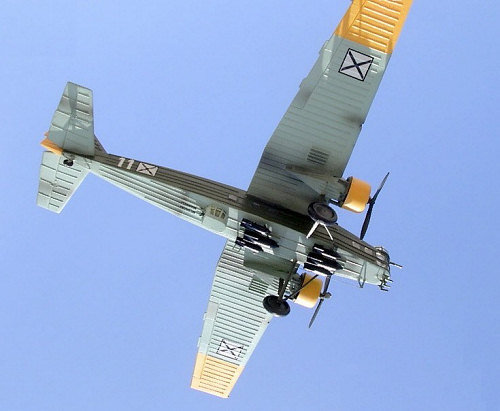 parts 76 and the turret
Perspex parts 59,60 and 63 were very clear. I also preferred to paint the
framing on these clear part items before they were fitted in place. The tail
wheel support struts were made out of steel wire while fin struts were made out
of thin transparent nylon thread as also were the wireless at the lower fuselage
and upper wing area.
parts 76 and the turret
Perspex parts 59,60 and 63 were very clear. I also preferred to paint the
framing on these clear part items before they were fitted in place. The tail
wheel support struts were made out of steel wire while fin struts were made out
of thin transparent nylon thread as also were the wireless at the lower fuselage
and upper wing area.
| COLORS & MARKINGS |
An accurate decal sheet gives a choice of four aircraft, all served with the Czech AF in the late Thirties at the outbreak of WWII.. It suggests that they were finished in Khaki green upper surfaces and light blue grey undersurfaces and the interiors were grey. Choice of markings is for 10, 7M, 01 and 4P. The aircraft were supplied to Romania as well as Bulgaria. One will have to do his own research for these options. I have decided to finish my MB 200 in a Bulgarian AF livery and for this scheme I used decal sheet from Delta Decals No 72-002. The photos that I have seen for aircraft No 11 depicted in the sheet, does not carry the streamline spats to the main undercarriage wheels unless these were removable. So I left these out as opposed to Delta Decals side view in their instructions. The aircraft camouflage was airbrushed using Humbrol olive green with a few drops of yellow added to the mix while the lower surfaces were in Humbrol blue grey, the shade used on German aircraft undersurfaces. The accompanying art work and photographs of the model show the details of the model paint finish.
| CONCLUSIONS |
My
early impression of the MB 200 as being a somewhat primitive design with a
little known service history was offset with the
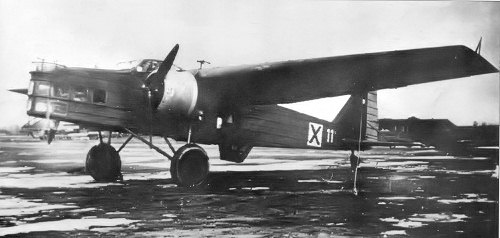 outcome of a truly striking
model containing a high degree of detailing which has fitted yet another gap in
the Bulgarian Air Force section. What a contrast there is among the four bomber
designs that served with the royal Bulgarian Air Force: The Do-11, Do-17p, FW-58
and the MB200 when displayed near each other.
outcome of a truly striking
model containing a high degree of detailing which has fitted yet another gap in
the Bulgarian Air Force section. What a contrast there is among the four bomber
designs that served with the royal Bulgarian Air Force: The Do-11, Do-17p, FW-58
and the MB200 when displayed near each other.
Editor's Note: Carmel doesn't really say much about what the kit is like to build, but if this is like most of the KP line of kits from the 70s and early 80s, then you need to treat it as you would a short run kit. Test fit all the parts and be sure to clean up the edges for a good fit. It will probably need an amount of filler as well, but since it is a slab sided aircraft, you will find it much easier to sand. KP's plastic is softer than most so care needs to be taken in this regard as too much cement will deform the plastic, especially where it is thin.
July 2007
Copyright ModelingMadness.com. All rights reserved. No reproduction in part or in whole without express permission from the editor.
If you would like your product reviewed fairly and fairly quickly, please contact the editor or see other details in the Note to Contributors.